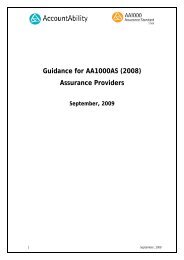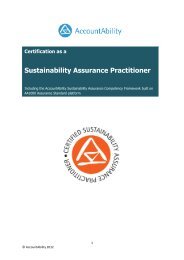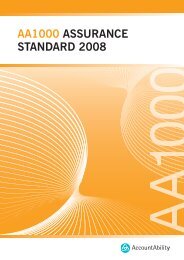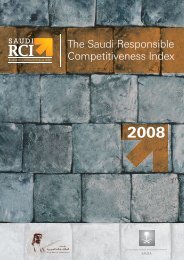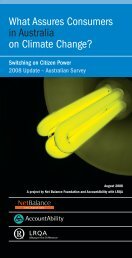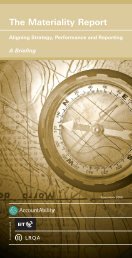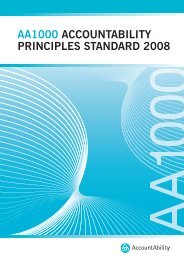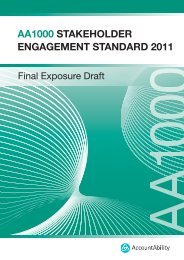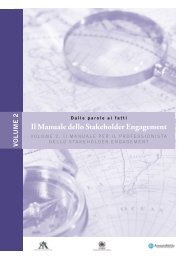The Stakeholder Engagement Manual Volume 2 - AccountAbility
The Stakeholder Engagement Manual Volume 2 - AccountAbility
The Stakeholder Engagement Manual Volume 2 - AccountAbility
You also want an ePaper? Increase the reach of your titles
YUMPU automatically turns print PDFs into web optimized ePapers that Google loves.
STAGE 1<br />
THINGS TO CONSIDER<br />
This is only a preliminary identifi cation and assessment of which stakeholders<br />
are likely to be most concerned about which issues. Further steps for<br />
prioritisation will follow.<br />
Check your ‘results’. Show the matrix to relevant decision makers within your<br />
organisation, to some stakeholders you already have a good relationship with,<br />
or have experts of specifi c fi elds review it. Th is will enhance the reliability of the<br />
pre-assessment.<br />
Not all material issues can be allocated to strategic objectives. Th is does not<br />
mean you can ignore them. It is important for the compilation of the list<br />
to remain open-minded and fl exible to issues that may be important to<br />
stakeholders, but are not immediately seen as relevant to the organisation.<br />
Only then can the list be comprehensive.<br />
Th e issue/stakeholder matrix is not set in stone, but is likely to evolve and<br />
develop as you gain more understanding of stakeholders and issues.<br />
Review this table as you learn more about your stakeholders.<br />
Th e issue/stakeholder matrix also highlights where diff erent groups of<br />
stakeholders are concerned about the same issue and might be better approached<br />
through a multi-stakeholder process rather than on a one-to-one basis<br />
(see Stage 2 for more on multi-stakeholder engagement).<br />
THE PRACTITIONER'S HANDBOOK ON STAKEHOLDER ENGAGEMENT | 39



